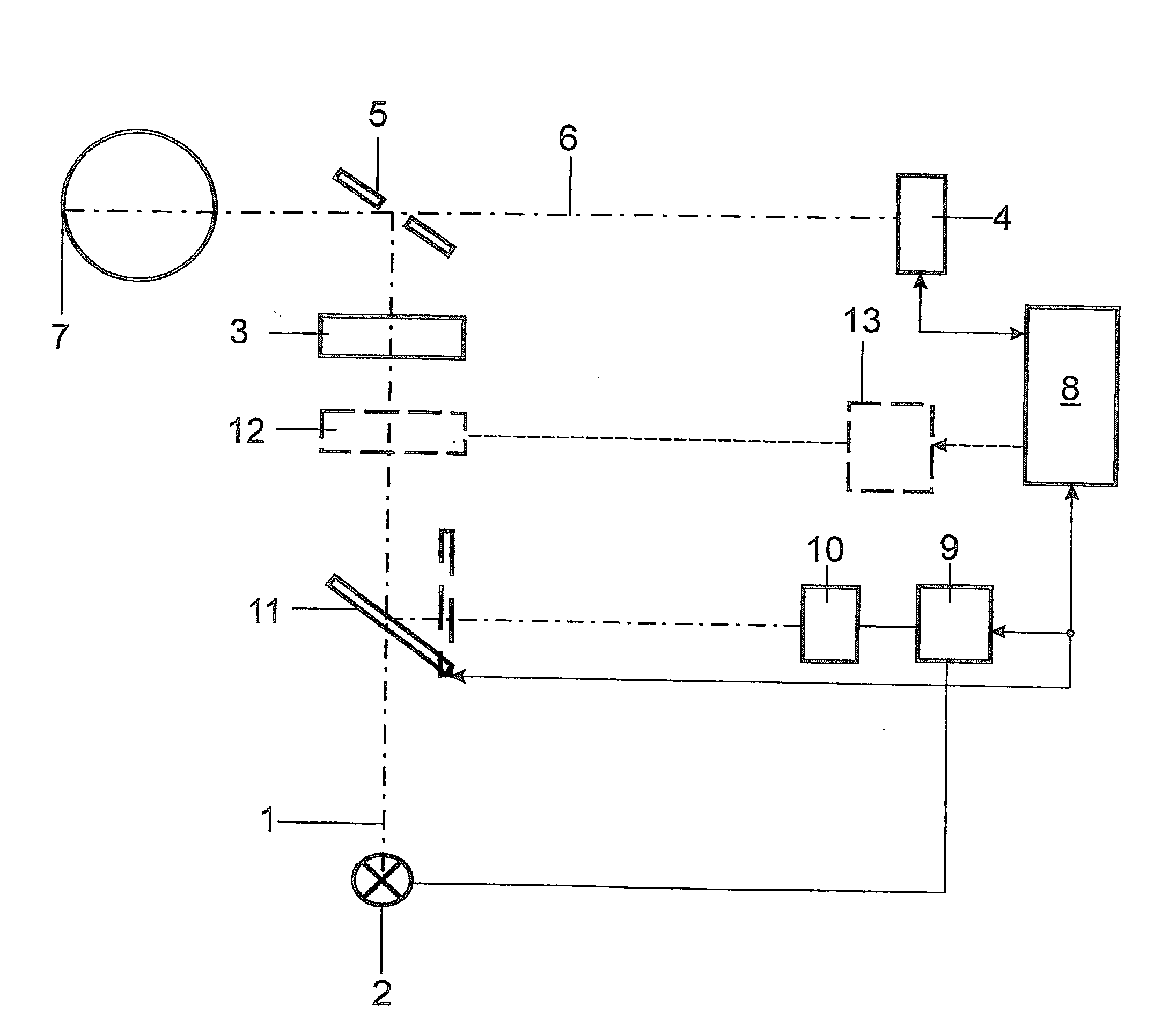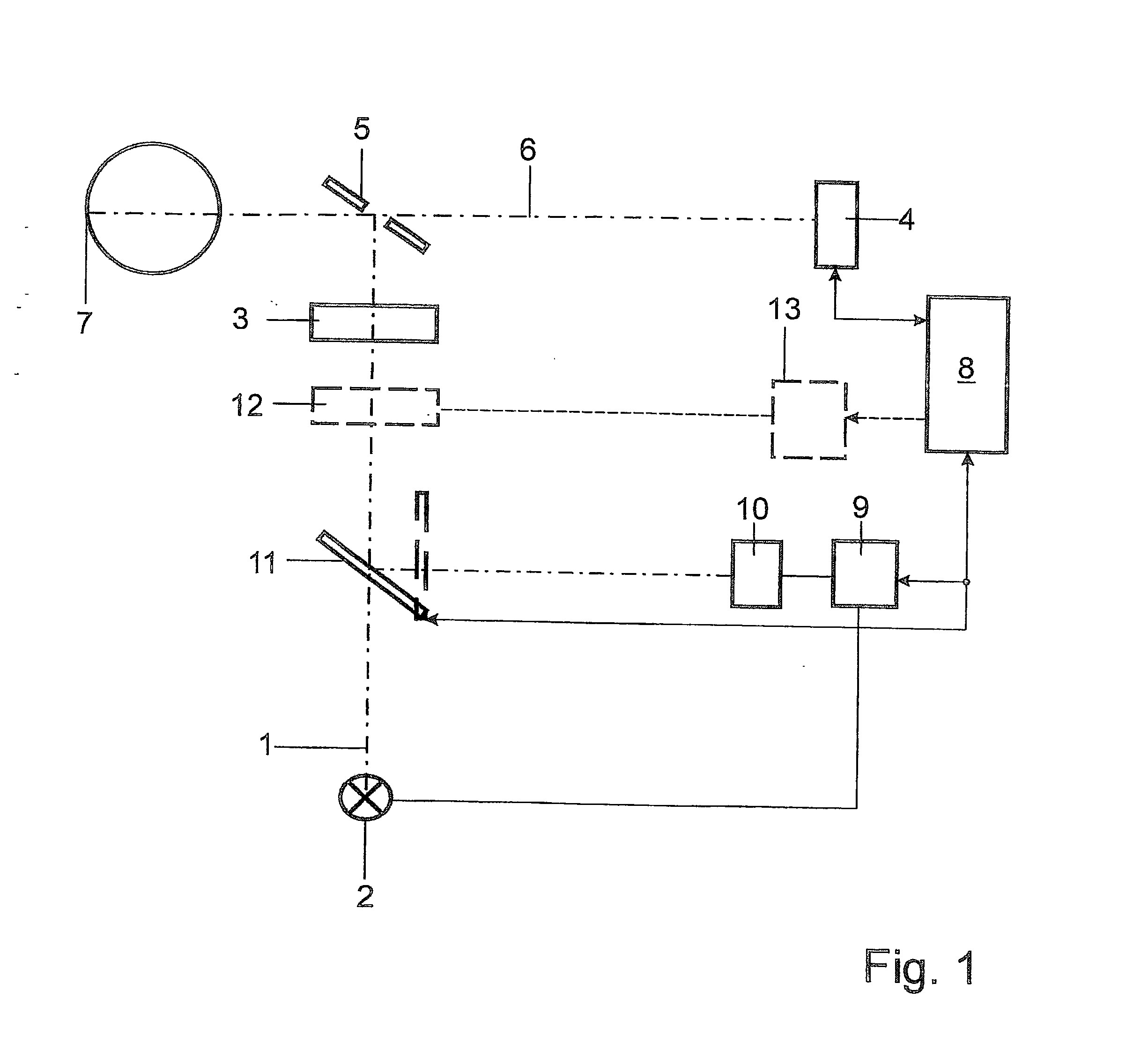Spectral Photometry Method for Determining the Oxygen Saturatiobn of the Blood in Optically Accessible Blood Vessels
a technology of oxygen saturation, which is applied in the field of spectral photometric determination of the oxygen saturation of the blood in optically accessible blood vessels, can solve the problems of oxygen saturation, difficult to achieve the required high accuracy in reflection measurements at blood vessels of the fundus, and the complex process of light propagation in the blood vessel embedded in the retina and in the environment of the retina, etc., to achieve the effect of reducing the stress on the patient while recording spectrally different images
- Summary
- Abstract
- Description
- Claims
- Application Information
AI Technical Summary
Benefits of technology
Problems solved by technology
Method used
Image
Examples
Embodiment Construction
[0034] The image-generating device shown in a simplified view in FIG. 1 can be used to implement the method according to the invention which can be applied preferably, but not exclusively, to blood vessels of the ocular fundus.
[0035] In principle, the method according to the invention can be applied to optically accessible (and identifiable) blood vessels of biological objects of which the congruent monochromatic images, preferably in different spectra, which are required for the spectral photometric determination of the oxygen saturation of the blood can be recorded, for example, also with a slit lamp, an endoscope or a surgical microscope.
[0036] According to the present embodiment example, the images of the fundus of the eye are recorded at a measurement wavelength λm=610 nm at which the absorption / reflection of oxygenated and reduced hemoglobin differs and at a reference wavelength, i.e., an isosbestic wavelength λi=548 mm of the hemoglobin.
[0037] This may be carried out, for ...
PUM
 Login to View More
Login to View More Abstract
Description
Claims
Application Information
 Login to View More
Login to View More - R&D
- Intellectual Property
- Life Sciences
- Materials
- Tech Scout
- Unparalleled Data Quality
- Higher Quality Content
- 60% Fewer Hallucinations
Browse by: Latest US Patents, China's latest patents, Technical Efficacy Thesaurus, Application Domain, Technology Topic, Popular Technical Reports.
© 2025 PatSnap. All rights reserved.Legal|Privacy policy|Modern Slavery Act Transparency Statement|Sitemap|About US| Contact US: help@patsnap.com



